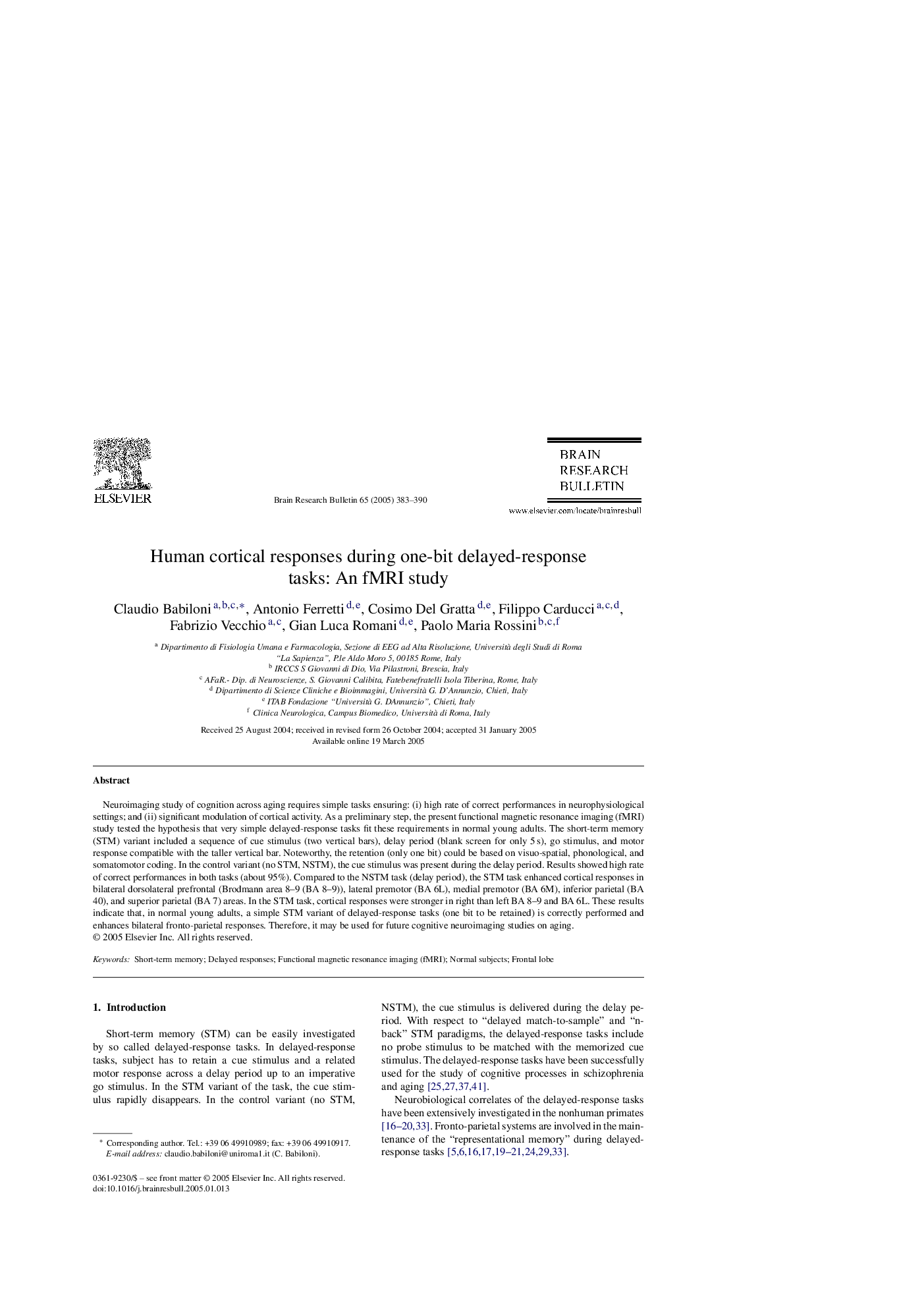| Article ID | Journal | Published Year | Pages | File Type |
|---|---|---|---|---|
| 9409613 | Brain Research Bulletin | 2005 | 8 Pages |
Abstract
Neuroimaging study of cognition across aging requires simple tasks ensuring: (i) high rate of correct performances in neurophysiological settings; and (ii) significant modulation of cortical activity. As a preliminary step, the present functional magnetic resonance imaging (fMRI) study tested the hypothesis that very simple delayed-response tasks fit these requirements in normal young adults. The short-term memory (STM) variant included a sequence of cue stimulus (two vertical bars), delay period (blank screen for only 5Â s), go stimulus, and motor response compatible with the taller vertical bar. Noteworthy, the retention (only one bit) could be based on visuo-spatial, phonological, and somatomotor coding. In the control variant (no STM, NSTM), the cue stimulus was present during the delay period. Results showed high rate of correct performances in both tasks (about 95%). Compared to the NSTM task (delay period), the STM task enhanced cortical responses in bilateral dorsolateral prefrontal (Brodmann area 8-9 (BA 8-9)), lateral premotor (BA 6L), medial premotor (BA 6M), inferior parietal (BA 40), and superior parietal (BA 7) areas. In the STM task, cortical responses were stronger in right than left BA 8-9 and BA 6L. These results indicate that, in normal young adults, a simple STM variant of delayed-response tasks (one bit to be retained) is correctly performed and enhances bilateral fronto-parietal responses. Therefore, it may be used for future cognitive neuroimaging studies on aging.
Keywords
Related Topics
Life Sciences
Neuroscience
Cellular and Molecular Neuroscience
Authors
Claudio Babiloni, Antonio Ferretti, Cosimo Del Gratta, Filippo Carducci, Fabrizio Vecchio, Gian Luca Romani, Paolo Maria Rossini,
